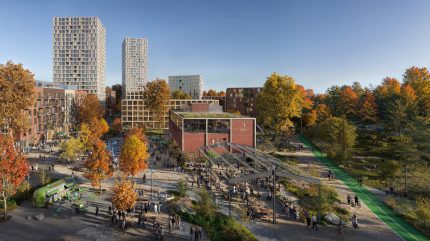
Real-estate company Brigil has unveiled the Espace Canevas community project to revitalise an urban hub in Québec, Canada, with an investment of approximately C$1.3bn ($950m).
The Espace Canevas community project is poised to transform the former Village Cartier shopping centre into an inclusive and sustainable living space.

Discover B2B Marketing That Performs
Combine business intelligence and editorial excellence to reach engaged professionals across 36 leading media platforms.
The development will feature up to 2,600 residential units, as well as 192,000ft² of commercial space and 182,000ft² of office space.
Its design focuses on stimulating the local economy, enhancing connectivity, and prioritising green spaces and active mobility.
Brigil development vice-president Jessy Desjardins said: “What we are proposing with the Espace Canevas community is the redefinition of our urban spaces for the benefit of the Gatineau-Ottawa population.
“Reflecting the ambitions of the neighborhood, the project offers a second life to the Village Cartier shopping centre and demonstrates the immense potential for transforming large commercial spaces to increase the number of available units in the context of a housing crisis.”

US Tariffs are shifting - will you react or anticipate?
Don’t let policy changes catch you off guard. Stay proactive with real-time data and expert analysis.
By GlobalDataLocated complementarily to Gatineau, Espace Canevas aims to integrate with its surroundings. The approach includes varying building heights to ensure the space remains open.
The move comes after six years of transformation, design, and community engagement.
Desjardins added: “We held working sessions with architects, urban planners, and Canadian and Danish experts to identify concrete ways to improve the quality of life for the population within real-estate projects.
“We return from these visits more motivated than ever, and Brigil intends to continue playing a leading role in redefining the social function of public spaces in the region.”
The Espace Canevas project will offer a diverse range of rental housing options, fostering a neighbourhood life with accessible green spaces and community places.
The design prioritises mobility for pedestrians and cyclists, featuring trees and an integrated rainwater management system visible in the landscape. The project plans also include local businesses such as cafés and restaurants.



